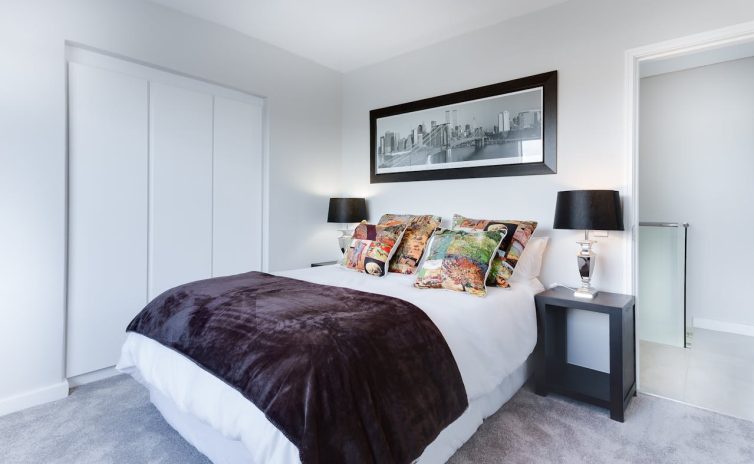In design and art theory, symmetry is regarded as a fundamental principle.
People from all cultures seem to gravitate instinctively to designs that are somehow symmetrically balanced in one way or another. Even Palaeolithic cave art and artefacts overwhelmingly display this tendency, which hints that humans crave symmetry.
Very few of us still live in caves but, as far as most people are concerned, symmetrical interior designs—even when imperfect—create a sense of order and predictability. These attributes can make spaces feel safe and inviting, allowing those present to relax and be themselves, which is exactly what you want in a home.
Whether you’re aiming for a formal look, a minimalist aesthetic, or even a maximalist design, integrating some symmetry into your home’s interior spaces can elicit a positive, primal reaction to its ambience. Here are some tips to help you achieve design symmetry in every room of your house:
1. Well-Composed Gallery Walls
To be clear, achieving symmetry within your home does not mean that every single element has to line up perfectly. There are practical and, occasionally, aesthetic reasons for some parts of an interior design to be asymmetrical. In these cases, setting up a gallery wall of art prints and arranging them in a formal configuration could provide the space with a calculated amount of symmetry to tie the space’s visuals together.
2. Balanced Furniture Placement
Similarly, you can arrange furniture in the space in a way that creates visual balance on both sides of the room. For instance, if you place a sofa on one side of the room, you can balance it with a matching armchair or side table on the other side.
Contrary to popular dogma, these elements do not have to be strictly from the same set. This strategy should work so long as the proportions and perhaps the colours and textures of each piece are roughly similar or complementary.
3. Smarter Storage Solutions
Both built-in and standalone storage units can be used and arranged to create visual harmony but they’re also valuable for another reason. Closed storage can hide items that don’t necessarily have to be displayed, like kitchen appliances and clothes, which improves the overall balance of a room.
For the best results, stick mostly with closed storage units and only use open storage for keeping things that you want to display. Remember, no matter how insignificant an item is, it can contribute or detract from the room’s balance when it’s out in the open.
4. Mirrored Elements
Wall mirrors are often used in interior design to maximise lighting and provide an illusion of space, but they can also be used to instantly provide visual balance. If you want to use mirrors in this way, wider is usually better. Alternatively, you can also use multiple smaller mirrors on walls or as discrete furniture pieces for the same effect.
5. Centred Focal Points
Most rooms depend on a few key pieces (like fireplaces, beds, or sofas) to define their function. By placing these defining elements in the centre, you can anchor the room and easily arrange other pieces around them to produce a symmetrical effect. If you’re building a new home or renovating a room, be sure to set up fixed elements like electrical outlets, lights, and windows to better accommodate these key pieces.
6. Strategically Matched Accessories
Matching accessories can help build an especially strong sense of symmetry and cohesion. However, while matching things like cushions and artwork can be effective at producing symmetry, all-matching room decor can seem a bit much in a lot of cases. Work from a more general theme rather than from a hyper-specific one so that a wider variety of pieces can be accommodated into the space without disrupting visual harmony.
7. Identical Window Treatments
One thing that should always match in a room is the window treatments. Whether you use curtains or blinds, they must match to ensure symmetry within a space. If you live in a detached home and are concerned about the appearance of the windows from the outside, consider installing the same window treatments throughout all your home’s windows. For better results, be sure to hang your treatments at the same height and width.
8. Architectural Symmetry
If you’re renovating or building a home from scratch, have your interior designer emphasise architectural features, such as windows, doors, ceiling lights, and built-in shelves. Highlighting these fixed elements creates a sense of rhythm and cohesion throughout the space that remains present regardless of the space’s future arrangements.
Bring a Sense of Balance into Your Home
Incorporating design symmetry into your house can create a sense of elegance and fulfil a truly primal desire for order in our lives. These tips should give you a few things to mull over, whether you’re redoing your home yourself or with the help of a professional interior decorator. Whatever style you’re into, symmetry remains a timeless principle that can give virtually any space a timeless appeal.
